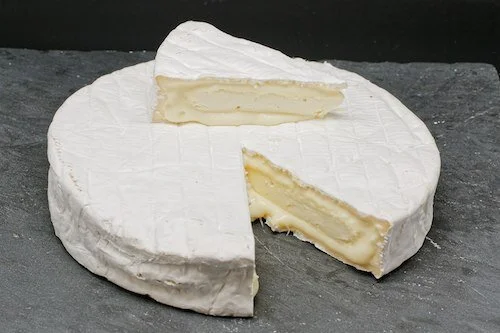What are Double and Triple Crème Cheeses?
All Brie cheeses are double creme
Double- and triple-cream cheeses were quite literally crafted for luxury. Emerging from Normandy in the 1850s, bloomy rinds captured the zeitgeist of 19th century bourgeoisie France, an era when rich, fatty foods were symbols of wealth and opulence. But even as the intervening years have turned bries and camemberts from luxury goods to household names, double- and triple-creams are as decadent today as they were 150 years ago.
In their country of origin, double- and triple-creams, a family of soft, buttery cheeses with hints of mushroom earthiness, are regulated by culinary law. To be a double-cream, a cheese must contain a minimum of 60% butterfat fat content in the dry matter (FDM/FDB), that is the fat present in the solids that would remain if all of the moisture was removed from the cheese, a quality achieved by adding cream to the milk before it forms curds. In a triple-cream, that fat content is ratcheted up to a minimum of 75% fat content in FDM/FDB, often producing an even richer, more velvety texture and flavor. These finished cheeses however are not 60% or 75% fat however, since you have to account for the water content. For example, a double creme is actually closer to 35% fat since half the cheese is water
Traditional double- and triple-creams are made from 100% raw cow’s milk and cream. Both have bloomy rinds formed by yeast and mold blossoming on the surface of the cheese. It takes brie, arguably the best-known style of double cream, just four weeks to mature. When cut, they ooze with creamy, rich goodness.
Whereas double- and triple-creams have historically played by the rules, migration out of the Normandy countryside has expanded their definition, especially in the New World. Some American bloomy rinds, including California’s Marin French Cheese’s Triple Cream Brie, the first New World triple-cream to win gold at the World Cheese Awards in 2005, contain far less fat than their French counterparts. Others, like New York’s Coach Farm’s Triple Cream, are made using goat’s milk instead of or in addition to the standard cow’s milk.
While there is no shortage of outstanding double- and triple-creams on both sides of the pond, we can’t get enough of the ooey-gooey texture and mouth-watering decadence of these five French and American favorites:
Brillat-Savarin French Triple Cream Cheese
"Brillat Savarin Affine" by amandabhslater is licensed under CC BY-SA 2.0
A direct descendant of Normandy’s first triple-cream, Brillat-Savarin is a classic triple-cream with a buttery sweetness and moist, slightly chalky texture that dates back to the 1930s.
Fromagerie Rouzaire Brie de Nangis
"File:Wikicheese - Brie de Nangis - 20150515 - 013.jpg" byThesupermat is licensed under CC BY-SA 4.0
Cheesemaker Robert Rouzaire based his French double-cream brie on the traditional recipe produced by local farms around Nangis in the region of Ile-de-France. Its flavor is mild but lusciously buttery.
Fromagerie Guilloteau Fromager d’Affinois
Though technically a double cream, unlike standard French brie Fromager d’Affinois is produced in just two weeks using the water-removing process of ultrafiltration. The result is an ultra-silky cheese with a richness more akin to its triple-cream cousins.
Saint-Andre
Made 75% fat content FDM/FDB, this cheese from Normandy is a shining example of a true French triple-cream. Saint-Andre is rich and buttery with a slight saltiness and a tangy rind.
Hofmeister-Champignon Cambozola
Sometimes called a blue brie, the German Cambozola combines the extra creaminess of a triple-cream with the Penicillium molds commonly used in producing gorgonzola or roquefort. The result is a velvety cheese woven through with a mild blue tang.
Cowgirl Creamery Mt Tam Triple Cream
Mt Tam, photo credit: Sara Remington.
One of the best known American-born triple creams, the decadent Mt Tam, made from organic, forage-based milk in Marin County, California has a fudgy core and notes of salted butter and white mushrooms.
Vermont Creamery Double-Cream Cremont
Cremont photo credit Vermont Creamery
An all-American blend of cow and goat’s milk from local family farms, Vermont Creamery’s signature cheese is earthy and tangy with aromas of creme fraiche, hazelnut and butter.







